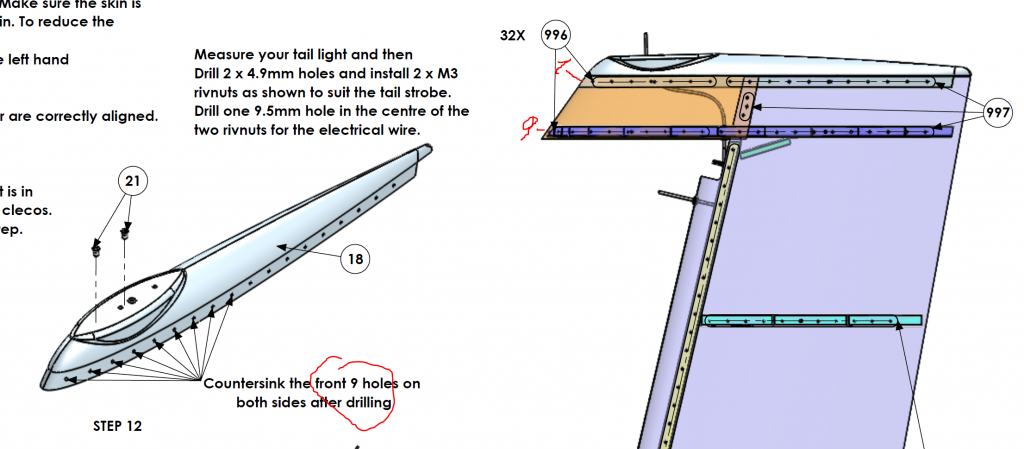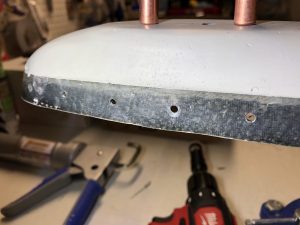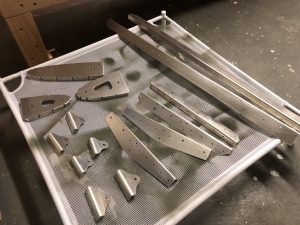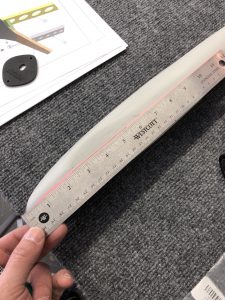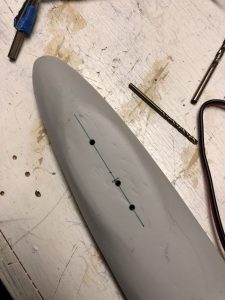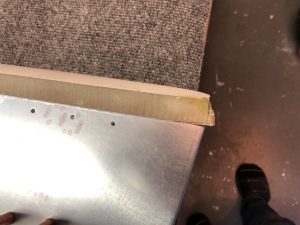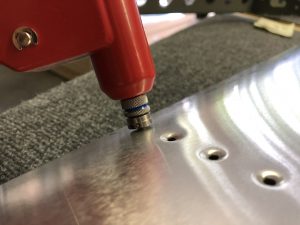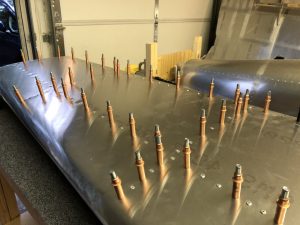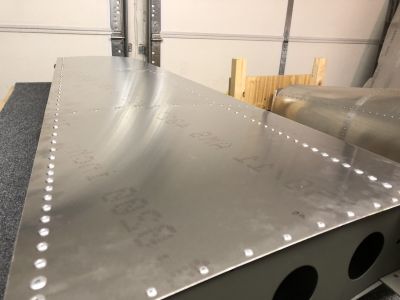After putting the Elevator construction on pause due to the alignment issue of the center rib. I decided to get started on putting together the Vertical Stabilizer. I’ve heard back from the Factory and it turns out that they’ve changed the Rib and will be sending me the correct new versions of the ribs (EL-RIB-001-C-E-1 & EL-RIB-101-C-E-1), so I’ll have to wait until I get those.
So onto the Vertical Stabilizer – the bottom of the rear spar holds a lot of M4 Rivnuts, so it was time to updrill the holes to the correct size in order to fit the rivnuts.
Using the step-drill bit I enlarged the holes just a bit smaller than the Rivnuts and then finalized it to the exact size using a hand reamer since you don’t want the hole to be any larger than the not so it gets a tight fit.
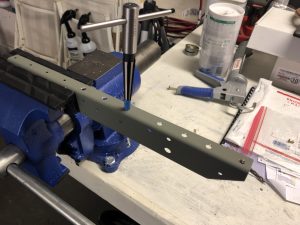
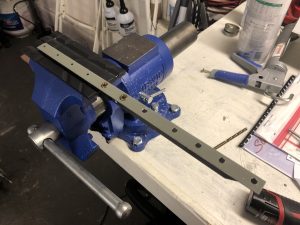
Once I was done enlarging all the holes I took care of deburring the holes and then went to work installing all the rivnuts using the Astro ADN14 Rivnut puller attachment for my drill and adding Loctite 277 (red) Threadlocker for added strength.

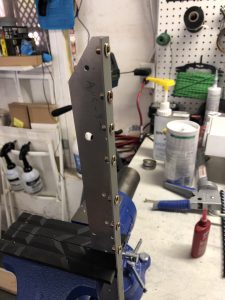

After all that was done, I put together the spar with the brackets for a quick test fit. While doing so I also found an error in the instructions, which say to rivet the hinges on the bottom with 8 (4 a side) 4mm rivets, but actually, only the center one (where I have black clecos) should be riveted, the outer ones will be bolted to the Fuselage (which is why they have larger holes already and I temporarily used the larger golden clecos to hold it in place), so I sent the Factory a note to correct the instructions.




































